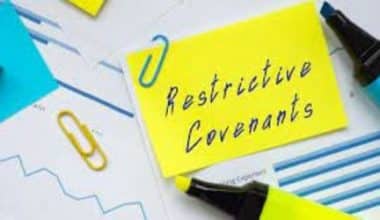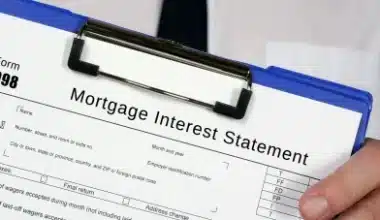Imagine you working your ass out to find your dream house. A house that not only fulfills your functional needs, accommodates family members, but also satisfies your deepest desires. You take the necessary step purchasing it and then after just a year when you’re just settling in, the government from nowhere announces that they are going to evict you from the property. I know how it sounds. But yeah, the government is allowed to do that. Basically, when a government seeks to seize private property through the use of eminent domain or another government function, it is said to be condemning real estate. This piece explains condemnation in real estate, inverse, and its example.
What Is Condemnation?
Condemnation is the legal process by which a municipality or another private company acquires the property. As a rule, a home or business building may be temporarily or permanently condemned by a municipality if it is deemed dangerous or harmful.
In another word, it is the right of a government or its agent to seize private property for public use, with compensation, through condemnation, Also known as eminent domain or a “taking,” during a condemnation proceeding, the government acquires both the property’s physical and legal ownership.
Generally, the legal notion of eminent domain can potentially condemn a structure for purchase. However, condemned property owners have recourse through the courts or may accept the terms and earn fair market value (FMV). As a rule, the court in a condemnation case must determine whether the taking is legal and whether compensation is adequate.
Condemnation Real Estate
As a real estate phrase, condemnation describes the process of acquiring property lawfully. Basically, public government and private organizations can carry out this procedure. Accordingly, the primary aim of this method is specific to meet a specific requirement, such as a safety or public health risk.
Generally, through the regulation of eminent domain, a government body can carry out these measures. This however means that private property can be taken and used for public purposes. The owner on the hand will only get fair compensation, while there is no requirement for approval before the sale may go through. Land seizures for public building projects like schools, highways, and roads are generally common occurrences or things we experience. Nevertheless, there is no necessary explanation regarding these actions to the public prior to the seizure of the property.
Although a government entity may seize assets for public use, there have been instances where these buildings and land seizures take place solely for private use. For a variety of reasons, like scarcity of rental properties or housing in general, this can arise. The city government may seize a person’s home for the purpose of repurposing it as apartments or letting it out for lease. As a result, residents in the area who are in need of homes will have additional options. Likewise, when a natural condition, such as deteriorating land, affects the entire area, the government might take this step to remedy the situation.
While temporary solutions can be found until the underlying causes are addressed and corrected. There are other circumstances where the liens are permanent, in which case owners run the possibility of losing their property to the government. Typically, the government will take the first step by acquiring or transferring ownership to a third party, then demolition and reconstruction.
Types of Condemnation in Real Estate
Generally, condemnation occurs when a government aims to use the assets for a purpose. This purpose may be different from the original intention of the owner. Another instance is when there’s a property condemnation because the condition of the property renders it risky for use or rental. Nevertheless, the following are the types of condemnation in real estate:
#1. Dilapidated or Unsafe Buildings
Buildings that are dilapidated or unsafe are frequently condemned in order to protect their inhabitants and occupants of the neighboring buildings. However, there may be a restoration of a building that is subject to condemnation for being unsafe to occupancy status if there are appropriate repairs. Meanwhile, it’s possible that a building may be subject to condemnation if it doesn’t meet local, state, or federal housing codes and safety standards.
While this can happen over time as a property ages. A building can become hazardous as a result of a lack of attention after a specific event like a fire, earthquake, or chemical spill that damages the property. The order may be lifted if renovations are made or damages are repaired. However, a building may be condemned as a result of renovations. This may happen if inspections uncover other unsafe conditions or violations that weren’t in place during the original construction of the building.
For this reason, property owners should not ignore condemnation orders. This is because doing so can lead to additional issues and expenses. However, making repairs or demolishing the property is an option for homeowners who want to get rid of a court order. On the other hand, there are options to choose from if you don’t agree with the directives. They can speak with a lawyer.
#2. Eminent Domain
The legal notion of eminent domain grants the US federal and state governments the right to condemn property and assume ownership of property titles when appropriate
However, when seizing the property, the condemning authority must provide a notice of seizure and fair compensation. This, in addition to the seizure of the land for public use under eminent domain laws. Meanwhile, the seizure must be solely for the benefit of the general public.
On the contrary, owners can accept a pro tanto reward without losing their right to sue. This however is after the authorities carry out an appraisal before executing a seizure. As part of this process, the condemning body must keep all parties informed and provide a copy of the assessment.
Furthermore, considering that pro tanto payments are typically small in comparison to what courts ultimately award owners of the condemned property, it’s possible for a property owner to sue if they feel that the amount offered does not accurately reflect its value. Additionally, condemned property owners have the option to sue to reclaim their property. This meanwhile is if they can demonstrate that confiscation was not in the public’s interest.
Condemnation Process
While these processes differ slightly, they are mostly similar. Generally, after the seizure, there will be an appraisal of the property by the government. Likewise, in consideration of a fair market value, the government makes a partial payment. Nevertheless, when a property owner opposes this action, eminent domain proceedings begin. To start with, there is a need for a hearing to prove that the house or land offer is reasonable. Typically, when one of the parties is unhappy, there is help available.
Read Also: ENCROACHMENT REAL ESTATE: EXAMPLES (+ HELPFUL TIPS)
#1. Notice & Hearing
Those who the condemnation process may affect should get a notification. One can achieve this by negotiating a fair price for the land, or by sending a letter with an appraisal value in the details. This is a notice indicating the government intends to seize the property. This usually includes an interpretation of the land’s usage, the proposed sales price, as well as other relevant data. Conciliator and further bargaining relating to the offer usually precede court action. If the parties cannot agree, the court will issue a formal condemnation to the owner.
States may vary in the number of hearings or the structure of these sessions. However, while the federal processes are speedier and have fewer stages, state legislation may alter the method. This mainly relies on the property and the government’s ultimate usage. Meanwhile, the offer potentially may trigger a contest. In other words, an appeal may be filed if the first court processes fail to establish a constitutional right infringement.
Furthermore, witnesses provide evidence to support the party’s position. Likewise, there will also be a normal description of market value. However, even if an appeal takes years, it does not stop the seizure. In some circumstances, the only solution is money.
#2. Condemnation Compensation
When the government seizes property, there must be compensation for such property at the time of seizure. If not, there will be interest applicable to the debt. When a seizure of only a piece of land takes place, one can file an objection months or years later. On the other hand, if the seizure involves more land, the owner must receive compensation regardless of the land usage. However, it is critical that the landowner understands these events and how they affect him or her.
#3. Need For a Lawyer
When a landowner receives a seizure notice, it is critical to engage legal counsel to protect the landowner’s rights and collect compensation for the confiscation. Negotiations may improve circumstances in some cases.
Inverse Condemnation Real Estate
Inverse condemnation in real estate is a legal doctrine that outlines a situation in which the government does not legally own the property. But rather regulates it to the point that it is useless.
As a legal phrase in real estate, “inverse condemnation” refers to when the government takes private property but fails to pay the compensation necessary in accordance with the 5th amendment of the Constitution. This, thereby forcing the property’s owner to file a lawsuit. This is why this kinda condemnation in real estate is regarded as inverse condemnation. Unlike indirect condemnation where the government is the plaintiff who sues a defendant/owner to seize his or her property. In inverse condemnation cases, on the other hand, the owner is the plaintiff and the order of parties is inverted.
In other words when a property owner files a lawsuit against a government defendant to recoup the value of a property, that in real estate can easily be termed inverse condemnation. Furthermore, the Private Property Rights Protection Act provides compensation to property owners whose use of their property is restricted due to government action. Even in cases where nothing happens to the property itself.
However, utility corporations and other government entities are not exempt from the doctrine of inverse condemnation. This doctrine ensures that property owners receive fair compensation. This is when there is damage to their assets while in use for public purposes. The 5th Amendment of the United States Constitution, as well as some state constitutions, mandates this.
Basically, this right protects a landowner’s ability to object to public initiatives that affect their property without their consent.
Condemnation Real Estate Example
Typically, local officials have the authority to evict anyone who constitutes a danger to themselves or others. It is possible for local authorities to condemn a historic structure. This, however, is if it has been deemed to be dangerous, such as collapsing. As a result, the property would become off-limits and in the hands of the government.
An example of real estate condemnation can include the seizure of land and structures to make way for public projects. For instance, a highway or private initiatives that will be beneficial to the public interest. A local government for example may want to develop a hotel in order to draw in tourists and raise taxes.
In regards to the example of eminent domain in real estate, there may also be a need for condemnation in the construction of power lines and pipelines. The government obtains a non-possessional easement to construct and maintain pipelines and power lines on your land. The original property owner, who retains title, signs a deed to formalize the deal.
There are several examples of how this might go wrong. For instance, when a utility company installs an electric line on a landowner’s property. As a result, the power line sparks an electrical fire that damages their house. The landowner has the right to sue the firm and receive compensation for inverse condemnation under the Fifth Amendment.
Conclusion
Most government agencies, though not all, have the power to convict for the sake of the “public good.” Some uses, such as roadways, schools, jails, airports, and government buildings, are plainly public and hence subject to regulation. Although, sometimes, the public objective may not always be evident or the apparent reasons for these actions. For example, in real estate, a building condemnation as part of a regeneration of a local region may lead to repurposing for private use. Especially one that reduces disaster and increases tax income.
However, when a property has begun the process of condemnation, it is critical to obtain assistance. When a governmental agency seizes a citizen’s private property and compensates the owner for it.
Condemnation Real Estate FAQs
A "Condemnation Proceedings" refers to what?
Proving that taking an asset under the authority of Eminent Domain is necessary to serve the greater good is critical. The private property owner’s interests will be safeguarded throughout the process. This, with just recompense for both damages to the property’s original form and loss of surviving property being provided
Is a taking the same as inverse condemnation?
We can use the term “regulatory taking” in real estate to describe inverse condemnation when government regulation severely impacts private property. Most crucially, when the government fails to compensate private property owners.
If your home is condemned and you owe money on it, what are your options?
Most mortgages stipulate that the borrower must maintain the property in a livable condition. Mortgage lenders may recall a loan or foreclose on a property if a residence is subject to condemnation. This might have a negative impact on your credit rating and make it more difficult to sell or renovate the property.
What is the opposite of eminent domain?
The government is the one who starts the eminent domain process. To counter an illegal government takeover, private property owners might file what’s known as an “inverse condemnation” lawsuit. When a landowner contest zoning limitations, it’s usually a land-use conflict.
Related Articles
- REAL ESTATE BUSINESS: A Definitive Guide for Beginners (+ How to start tips)
- FAIR VALUE ACCOUNTING: Definition & Benefits of Fair Value Accounting
- PALLADIUM ETF: Best Practice And All You Should Know Simplified)
- What Is Fair Market Value: How to Calculate the Value
- FAIR MARKET VALUE: How Fair Market Value Is Calculate
- Sox Compliance: Requirements and Controls






